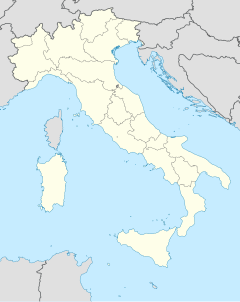Beigua Natural Park
| Beigua Natural Park | ||
|---|---|---|
| Map of the natural park | ||
|
|
||
| Location: | Genoa , Savona , Italy | |
| Next city: | Genoa | |
| Surface: | 87.15 km² | |
| Founding: | 1985 | |
| Address: | Via G. Marconi, 165 16011 Arenzano Tel. 010/8590300 |
|
The Beigua Natural Park ( Italian Parco naturale regional del Beigua ) is a nature reserve in the Italian region of Liguria . It is located in the metropolitan city of Genoa and the province of Savona .
history
It was established by means of two regional laws of April 9, 1985 and February 22, 1995 with a total area of 8715 hectares . The nature park includes three Comunità montane : the Comunità Montana del Giove , the Comunità Montana Argentea and the Comunità Montana Valli Stura e Orba . There are numerous hiking trails on its territory . In addition, the Beigua Nature Park is crossed by the high route of the Ligurian Mountains .
location
The natural park is made up of the territories of the municipalities of Arenzano , Campo Ligure , Cogoleto , Genoa , Masone , Rossiglione , Sassello , Stella , Tiglieto and Varazze . The highest mountain in the park is Monte Beigua at 1287 meters. The park stretches along the ridges of the Ligurian Apennines for about 26 kilometers in close proximity to the coastal strip of the Riviera Ligure . The area goes from west to east from Colle del Giovo over the mountains Monte Beigua , Cima Frattin (1145 m), Monte Rama (1148 m), Monte Argentea (1082 m) and Monte Reixa (1183 m) to the Passo del Turchino . The area is characterized by high alpine pastures, wetlands, beech, oak and chestnut forests, steep slopes towards the coast and many stone outcrops.
description
With the establishment of the European Geopark Network in March 2005, the Nature Park also joined and thus increasingly transformed into a Geopark .
The Parco del Beigua is today the largest park in Liguria and is located in a region full of contrasts, between the Ligurian coastline on the Mediterranean Sea and the interior, which is dominated by the varied and grandiose mountains of the Ligurian Apennines. In an area with a radius of just a few dozen kilometers, there is a varied natural spectacle: breathtaking mountains that drop steeply to the south to the sea, and a landscape in which nature, history, culture and old traditions are to be preserved through gentle geotourism .
In the national park, alpine and subalpine habitats are protected, some of which have their own characteristics ( macchia mediterranea ) towards the south due to the Mediterranean climate . In the park occurring here species are plants : the Marsh Helleborine (Epipactis palustris) and the animal world : the bat species Bechstein's bat (Myotis bechsteinii) and greater horseshoe bat (Rhinolophus ferrumequinum), and the birds of prey: Honey Buzzard (Pernis apivorus), the short-toed eagle ( Circaetus gallicus) and the common buzzard (Buteo buteo) are placed under special protection.
Attractions
Special sights are the Neolithic finds around the place Alpicella , located at the foot of Monte Beigua and connected by a geopath, the petrified coral reefs near a district of Sassello in the west of the park, the crystals around the Faiallo Pass in the east and the Gargasso Canyon (ital . Val Gargassa) in the northern tip in the municipality of Rossiglione , whose amazing landscape can be hiked on a circular route of more than four hours. A cultural attraction is the first Cistercian abbey to be founded outside of France (around 1120), the Badia di Tiglieto (also called Abbazia di Santa Maria ).
In the often impenetrable forests north of the mountain range wolves made their home again , in the waters of the Mediterranean Sea off Varazze, Cogoleto and Arenzano you can observe the silhouettes of the passing whales in spring and autumn when the visibility is good . In addition to the protected daytime birds of prey, golden eagles , eagle owls , red chalk and blackcap , along with eighty other bird species , have returned to the park area for several years.
Individual evidence
- ↑ Regional Law No. 16
- ↑ Regional Law No. 12
- ↑ http://www.europeangeoparks.org/
- ↑ Parco Naturale Regionale del Beigua: A Park in the Service of Biodiversity ( Memento of the original from July 15, 2012 in the Internet Archive ) Info: The archive link has been inserted automatically and has not yet been checked. Please check the original and archive link according to the instructions and then remove this notice.

